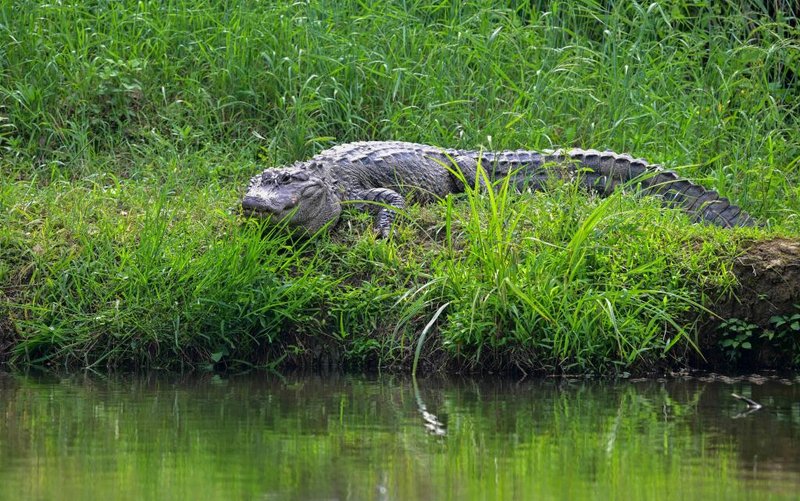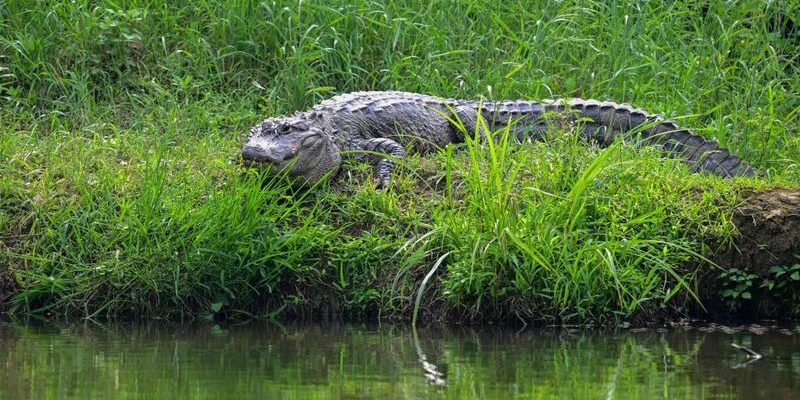
So, where exactly can you find Chinese alligators around the world? Well, it’s mostly in China, but they do have a few surprises up their scaly sleeves. Let’s dive into their habitats and see what makes these reptiles so special and where they call home.
China: The Primary Habitat of Chinese Alligators
When we talk about the Chinese alligator (*Alligator sinensis*), we’re primarily looking at China, where these reptiles reside in the wild. They are native to the eastern part of the country, particularly in the Yangtze River basin. This region offers the perfect mix of slow-moving rivers, wetlands, and lakes that provide not just food but also safety from predators.
To further understand their habitat, consider the rich biodiversity in these areas. The Yangtze River is famous for its unique ecosystem, which supports various waterfowl, fish, and amphibians that the alligators eat. You might think of these alligators as the quiet guardians of their watery homes, blending in with their surroundings, waiting for the right moment to snap up a meal.
However, the Chinese alligator’s habitat isn’t just a comfortable home; it’s also a vulnerable one. Due to habitat loss and pollution, their numbers have dwindled significantly. They are now considered critically endangered, which only adds to the urgency of conservation efforts in this region.
Chinese Alligators in Zoos and Wildlife Reserves
While their wild population has taken a hit, luckily, Chinese alligators can also be spotted in various zoos and wildlife reserves across the globe. Places like the Shanghai Zoo and Beijing Zoo are not only home to these reptiles but also play a crucial role in their conservation.
In a zoo setting, you might find these alligators in specially designed exhibits that mimic their natural habitat, complete with water features and shaded areas. This allows them to live more comfortably while educating visitors about their endangered status. Even if you’re not in China, you could still connect with these creatures at zoos in places like the San Antonio Zoo in Texas or the Dudley Zoo in the UK—interesting stops for those who want to see them up close!
Visiting these locations can be an eye-opener. You get to learn about their diet, behavior, and the conservation efforts in place to protect them. Many zoos also have breeding programs aimed at boosting the population of Chinese alligators, which is an absolute win for wildlife enthusiasts and conservationists alike.
Conservation Efforts for Chinese Alligators
As I mentioned, the Chinese alligator is critically endangered, with estimates suggesting that only a few hundred remain in the wild. This situation makes conservation efforts incredibly important. Organizations and scientists have partnered to create programs that protect their stagnant habitats and bring awareness to their plight.
One key strategy involves restoring natural wetlands, which not only benefits the alligators but also enhances the ecosystem for other species. You might be wondering how they go about this. Well, efforts often include replanting native vegetation, managing water levels, and reducing pollution to create a sustainable environment.
Additionally, captive breeding programs in zoos help bolster the population while educating the public about their significance. These initiatives are crucial, as they not only aim to save the Chinese alligator but also help people understand why biodiversity matters.
Chinese Alligators and Their Global Presence
While the Chinese alligator is predominantly found in China, their presence has extended beyond borders through conservation efforts, zoo exhibitions, and academic research. As these creatures become ambassadors for conservation, their influence spreads to countries worldwide.
Researchers and conservationists often travel overseas to collaborate on studies related to habitat restoration and species survival. Such teamwork has led to groundbreaking discoveries about alligator behavior and adaptations. For instance, these insights allow scientists to better understand how to encourage a thriving population both in captivity and the wild.
You might be surprised to find that even in academic circles, these alligators have sparked interest. Numerous studies focus on their genetics and adaptability, offering lessons that can be applied to other endangered species. The more we learn, the better we can protect them.
Understanding the Threats Faced by Chinese Alligators
It’s not all sunshine and rainbows for the Chinese alligator. Several threats continue to put pressure on their survival. One of the major challenges is habitat destruction due to urban expansion and agriculture. As cities grow and farmland expands, the wetlands that support these alligators have been drained or polluted.
Overfishing in the Yangtze River also presents a substantial problem. As fish populations dwindle, the alligators face food shortages, affecting their ability to grow and reproduce. It’s like trying to enjoy a meal at your favorite restaurant only to find the menu has been drastically cut.
Pollution is another serious issue. Chemicals and waste that find their way into the water can harm the very ecosystem that supports these reptiles. Imagine trying to breathe in an environment filled with smog—that’s what the Chinese alligator faces daily.
Engaging the Public: The Role of Awareness and Education
Raising awareness and educating the public about the Chinese alligator is vital for their survival. Many organizations and conservationists work tirelessly to spread information on social media, conduct workshops, and organize events in schools and communities.
These educational programs often incorporate fun and engaging activities. For example, interactive exhibits in museums allow people to learn about the alligator’s role in its ecosystem. Workshops may include activities like building model habitats, which help illustrate the importance of wetlands.
Here’s the thing: when people understand the challenges these alligators face, they’re more likely to take action. Supporting conservation initiatives or spreading the word can make a big difference. Every little gesture counts, whether it’s participating in a local clean-up or sharing information on social media.
The world of the Chinese alligator is as rich as it is alarming. While they primarily call China home, their situation echoes around the globe. From conservation efforts in zoos to the challenges they face in the wild, it’s clear that these unique creatures need our attention and support.
As we learn more about their habitats and the obstacles to their survival, we can work together to ensure they don’t slip away into extinction. Just like any piece of our natural world, the Chinese alligator deserves a fighting chance to thrive. So next time you think about these incredible reptiles, remember the journey they face and consider how you can be a part of their story.

